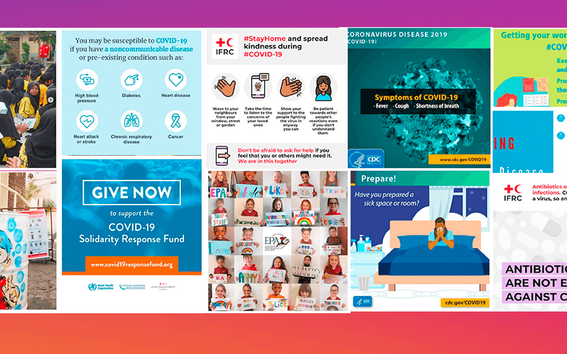How is Instagram used by the leading health agencies to engage with the public during the COVID-19 crisis?

Pictures can speak a thousand words! Given the significance of images for online information sharing, a team of researchers attempted to understand how pictures on social media can be used to communicate and engage the public with health messaging during a crisis. More specifically, the research focuses on the kind of messaging that has been portrayed by the leading public health agencies through Instagram during the COVID-19 pandemic. Moreover, Instagram user engagement was assessed through likes and comments indices.
Aqdas Malik, a researcher in the Department of Computer Science collaborated with researchers from USA (M. Laeeq Khan, Ohio University) and Canada (Anabel Quan-Haase, Western University) to study social media posts by the World Health Organisation (WHO), the United States Centers for Disease Control and Prevention (CDC), the International Federation of Red Cross and Red Crescent Societies (IFRC), and the National Health Service (NHS), UK. The team found that posts that performed very well in terms of likes and comments were those with pictures of celebrities, posts alerting/dispelling myths, fake news, or misinformation, infographics and data visualization.
“As most of the online users barely confirm the reliability of social media content before sharing with their network, huge responsibility lies on the shoulders of social media companies.” said Dr. Malik; “This is critical as the majority of the public around the globe get COVID related information through social media and most of the misinformation, disinformation, and conspiracies about the pandemic has been spread through these platforms.”
The team analyzed the Instagram presence of four major health agencies (NHS, CDC, WHO, IFRC) and found how the posts varied in their content theme, gender depiction, person portrayal, and image type. They compared how the different content of these posts resulted in different levels of engagement on Instagram. They found that effective strategies for public health organizations to use on Instagram include inquisitive messaging and infographics, as these performed well on the platform. This entails an effective data analytics and visualization strategy that should be employed by organizations especially for crisis and emergency risk communication.
“Instagram can be a highly engaging tool for reaching youth during crises and emergencies, in scenarios where younger demographics may not be effectively targeted by mainstream media” concludes Dr. Malik. The paper “Public health agencies outreach through Instagram during the COVID-19 pandemic: Crisis and Emergency Risk Communication perspective” is available to read online here https://doi.org/10.1016/j.ijdrr.2021.102346
Contact Details:
Aqdas Malik
Department of Computer Science
Aalto University
[email protected]
Read more news

DeployAI Partners Gather for Heart Beat Meeting in Helsinki
The European DeployAI project's partners gathered for the Heart Beat meeting hosted by Aalto University Executive Education in Helsinki.
Get to know us: Associate Professor Maria Sammalkorpi
Sammalkorpi received her doctorate from Helsinki University of Technology 2004. After her defence, she has worked as a researcher at the Universities of Princeton, Yale and Aalto.
Aalto computer scientists in ICML 2024
Computer scientists in ICML 2024